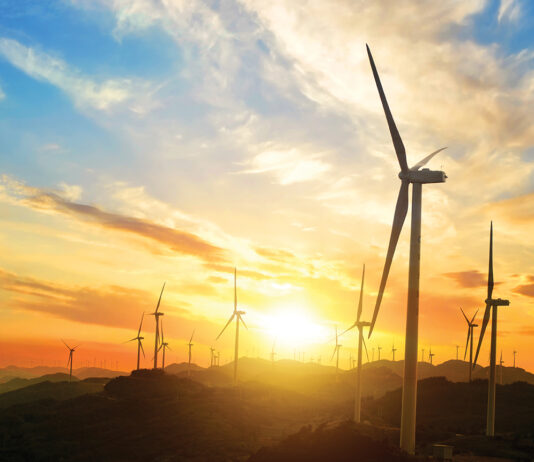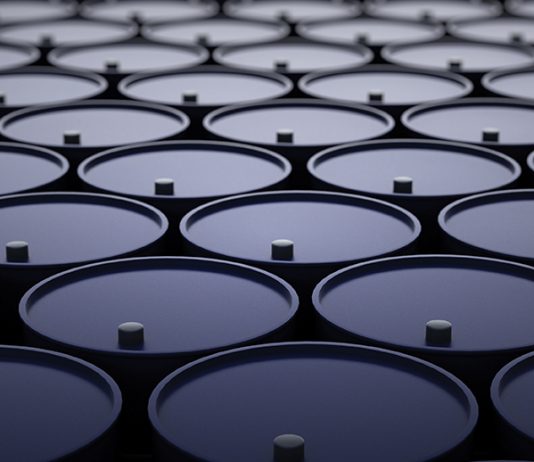
Unless you’ve already done the smart thing and retired to the wilderness of your choice, you’ve probably heard the news that the European Union struck a deal with the United States to considerably boost its intake of American LNG.
Considerably in this case means an additional 15 billion cubic meters this year, to grow to 50 billion cubic meters annually by 2030. Just for context, Gazprom’s exports to Germany last year hit a record high of 59 billion cubic meters.
The EU has committed to securing the demand for these billions of cubic meters of American LNG. The stipulation might seem surprising given the EU’s recent history of doing everything in its power to discourage fossil fuel consumption but it reflects a reality in which try as hard as Brussels might, business and households need readily available energy. It is in the “readily available” department that the deal with Washington raises some questions.
As David Blackmon put it in a recent post, the deal surprised the U.S. LNG industry because LNG producers were, apparently, never consulted on it. In other words, President Biden made a promise without checking with those in charge of its potential fulfillment.
The questions David posed included: “Does he plan to order his regulators to streamline permitting processes? Does he plan to somehow order banks and ESG investor groups to stop denying capital to companies in the industry, capital needed to fund their $10 billion LNG export facilities?” Perhaps the president does indeed plan to make it easier for LNG producers to get the necessary permits. This is, after all, within his power. As for the second question, the answer would be trickier.
Just because Europe is short on gas and about to become shorter once Russia shuts off the tap unless it is paid in rubles, doesn’t mean that the environmentalist lobby has taken a nap. On the contrary, the reaction to the U.S/EU deal has been swift.
“There is no way to ramp up U.S. LNG (Liquified Natural Gas) exports and deliver on the imperative climate commitments that the U.S. and the EU have pledged,” said the president of Earthjustice, Abigail Dillen, following the news.
“It will take years and cost billions to build out new LNG infrastructure that will lock in expensive fossil dependence and dangerous pollution for decades to come. Investing in new LNG is not a near-term fix for getting off Russian gas in Europe. It is a diversion of time and resources away from the urgent project of scaling clean energy in the last years we have left to triage in a climate emergency.”
I took the liberty of italicising the beginning of the second quote because it is telling of the state in which the EU and the U.S. are making decisions likely to affect the long-term energy security of, in this case, Europe.
It is also telling of how important it is to take time to consider the implications of a certain decision before you go ahead and make it.
The United States has abundant natural gas resources. Based on these resources alone, it could probably supply Europe with gas for decades to come. Sadly, it’s not only about resources. As Earthjustice’s president noted in the above quote, infrastructure is also necessary and it does not come cheap. Neither does it come quickly.
So, on the supply side, we have U.S. LNG producers caught by surprise — no doubt pleasant — by the White House’s decision to boost trans-Atlantic demand for their product. Specific deals are yet to be inked, by the way, but we have something of a framework agreement. What we don’t have is enough export capacity, yet. And it will take years to build it.
Now, there’s two ways U.S. LNG producers could go about it. They could either reduce shipments to their Asian clients to satisfy urgent European demand, giving up market share in the biggest LNG growth market, or they could supply limited amounts of LNG to Europe until such time as infrastructure allows them to supply more.
It looks like an easy decision to make and is very similar to the decision that Middle Eastern oil producers have made with regard to their stance on Europe’s oil supply. As Reuters’ John Kemp explained it in a recent column, “Breaking long-term contracts and giving up Asia’s lucrative growth markets to supply refiners in declining Europe, possibly only for a few months or years, would make little strategic sense [for Middle Eastern oil producers].”
Europe’s plans for gas are the same as its plans for oil: it wants them out of the EU’s life as soon as possible. Why, then, would U.S. producers invest in new infrastructure just for European customers if ten years from now Brussels slaps some new sort of emission standard that makes U.S. LNG prohibitively expensive? And why do this when there’s the whole of Asia, thirsty for all the gas it can get its hands on?

While U.S. LNG producers no doubt mull the pros and cons of a European LNG offensive/rescue mission, on this side of the Atlantic government planners are looking for floating storage and regasification units (FSRU). I know it sounds like a bad joke, but yes, the EU first agreed the additional volumes of LNG and is only now starting to look for ways to get them to consumers.
The Financial Times (FT) recently wrote about it. Germany, Italy, and the Netherlands are in a race to secure FSRUs for their planned LNG imports because building permanent import and regasification terminals takes too much time and, I expect, money, and the EU is eager to cut Russian gas imports by two-thirds within the next nine months.
“Europe is screaming for FSRUs to get energy in, whatever it costs,” the FT quoted the managing director of one of the very few companies that own such units, Norwegian BW LNG, as saying. Germany is in talks for three such vessels, which will provide it with regasification capacity of some 27 billion cubic meters annually. This is quite a respectable if a little stretchy amount, given that, as the FT itself notes, a single FRSU typically has an annual capacity of 5 billion cubic meters.
It also notes that although quicker to deploy than import terminals, FRSUs still take several years to install and put into operation. This alone is enough to conclude that the whole “two-thirds less Russian gas by end of 2022” might well be a fantasy.
To be fair, Haram Sivam, former Investment Lead on LNG-related projects at the International Finance Corporation, tells me that not all FSRUs were created equal. “There are no typical FSRUs as most are bespoke solutions. But most modern FSRU terminals can store and regasify around 4 million tonnes to 5 million tonnes of LNG annually. To go from tonnes to cubic meters you have to divide the tonnes by 44%.
“So most modern FSRUs are capable of annual storage capacity of around 9 to 11 million cubic meters of LNG. I think there is at least one FSRU that is around 12 million cubic meters of LNG per annum, if not a bit larger. Note that supply vessels and delivery frequency can also limit LNG throughput of an FSRU.”
But that’s not all because in addition to the limited fleet of FRSUs and the time it takes to put them into operation (the fastest appears to be 11 months, according to Sivam), there are also the already notorious supply chain breakages that have got a growing number of experts from various industries talking about the end of globalisation.
There are only five available FRSUs in the world today, according to Golar LNG, another FRSU owner. Another three could be released from their contracts this year, Karl Fredrik Staubo also told the FT. However — and I’m afraid this is too funny to not laugh at it — FRSUs are sensitive vessels and cannot operate in cold waters, which are the only available waters in northern Europe.
A way around this challenge, to quote Sivam, is converting a vessel already operating in these waters into one that can be used as an FRSU. Based on the locations of Europe’s LNG import terminals, the only northern, so to speak, terminal that suggests LNG tanker movement in colder waters is the one in the Netherlands.
To top it all off, charter rates for these vessels are naturally soaring, with the annual rate now at $40-60 million, according to Rystad Energy, and likely to continue up as “a bidding war” unfolds for these vessels.
To sum up, the EU committed to maintain demand for at least 50 billion cubic meter of gas in the form of LNG annually despite its green transition plans and despite the fact it lacks the import infrastructure to bring this gas to end consumers.
Granted, if the EU somehow manages to reduce intake of Russian gas without plunging its economies into severe recession, maintaining this demand will be easy. The supply that would theoretically replace Russian pipeline flows would remain an issue until Qatar boosts its production capacity, planned for the end of 2025. And that new boosted capacity will be 110 million tonnes annually, or about 250 billion cubic meters for all gas consumers.
There is a lot to be said about making decisions on the fly, especially when they concern hundreds of millions of people already frustrated after two years of pandemic restrictions and rising inflation. For the purposes of this article, I’ll only mention one of these many things. Life is going to get a lot more expensive.
About the author: Irina Slav has been writing about energy, with a focus on the oil and gas industry, since 2006. Her articles have appeared in Oilprice, Fortune, Insider, and Time magazine, among others.
















